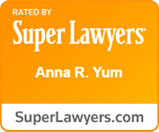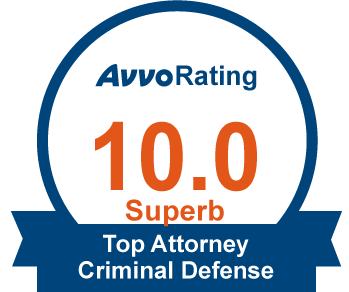Driving on a suspended license in California is punishable under California Vehicle Code 14601.1(a) VC. After facing an arrest for this offense, you could be subject to serious punishment like further license suspension, hefty fines, and serving time in jail.
Because of the consequences, consider taking immediate legal action. This should include exploring your legal options and building a solid defense with the help of an experienced criminal lawyer.
At the Law Offices of Anna R. Yum, we offer legal counsel and representation to defendants charged with driving on a suspended license or related driving crimes in the San Diego area. Our lawyers are on standby, ready to work on your case. So, contact our office to schedule a free, non-obligatory consultation and to discuss your case.
Free Consultation (619) 233-4433
Legal Definition of Driving On A Suspended License
California Vehicle Code 14601.1 (a) makes it a crime to drive a motor vehicle while your driver’s license is suspended or revoked. A suspended driver’s license means that the court or Department of Motor Vehicles (DMV) revoked your driving privileges for a particular period.
Actions that could result in your driving privileges being stripped are:
- A DUI conviction, reckless driving, or accumulating too many points.
- Failing to pay fines or fees, not appearing in court, or not having the required auto insurance.
Elements that the Prosecution Must Prove
The court can only find you guilty of a Vehicle Code 14601.1 (a) violation if the prosecutor proves the following elements beyond a reasonable doubt:
- You were operating a motor vehicle.
- You did so at a time when your driving privilege was suspended or revoked.
- You knew your license was suspended at the time you were driving. The court can rule that you had knowledge of your license suspension if:
- The DMV sent you a notice via mail to notify you of your driver’s license suspension.
- The DMV mailed the notice to the latest address they have on your file.
- The notice was not mailed back to the DMV as unclaimed or undeliverable.
Prosecutors typically do not pursue suspended license charges unless you are a repeat offender within the past two years.
Legal Defenses to Driving on a Suspended License
When facing charges for driving on a suspended license in California, you can use particular legal defenses to fight the allegations. These include the following:
No Knowledge
If the DMV fails to send the suspension notice to your current, correct address on file, this could provide grounds for this defense. The burden would be on you to demonstrate that your address with the DMV was up-to-date.
Even if the notice was sent to the correct address, you may still have a defense if the DMV cannot prove you received it. Proof of receipt would typically mean a signed return receipt for mailed communication.
The “no knowledge” defense centers around the idea that even if you did technically receive the notice, circumstances may have led you to reasonably believe your license was not suspended. This could include miscommunications or incorrect information relayed by a DMV employee.
An example: The California DMV suspends Jane’s driving privileges after she accumulates many points on her driver’s license for being a negligent operator. The DMV mailed the notice of suspension to an old address. Therefore, Jane did not receive the mail. During a traffic stop, the officer discovered that Jane was operating the motor vehicle on a suspended license. If Jane faces charges, the court cannot find her guilty of a VC 14601.1(A) violation.
No Suspension
Sometimes, mistakes happen. It is possible that your driver’s license was incorrectly marked as suspended due to a clerical error or outdated information within the DMV system. In this case, your attorney should petition for a thorough review of your driving record.
Other times, even if a suspension was ordered by the court or the DMV, it may not have been properly entered into the system. Therefore, if there is no official record of the suspension, technically, you were not driving on a suspended license.
If your license was suspended but you subsequently fulfilled the requirements for reinstatement, there could be a lapse in communication or record-keeping that has not accurately reflected the change in your license status.
Necessity
The court could dismiss or lower your charges if you prove you had a sufficiently good reason to violate VC 14601.1(A). The law considers this defense “guilty with an explanation.”
Situations where you could use the necessity defense are:
- You were facing an immediate threat of serious harm to yourself or another person.
- There was no reasonable alternative to driving.
- The harm you were trying to avoid outweighed the harm caused by driving with a suspended license.
Punishment and Sentencing for a California VC 14601.1(A) Violation
Driving on a suspended license is a misdemeanor offense. The punishment for a violation of Vehicle Code 14601.1(a) depends on the reason why your license was suspended. Your penalties are basically determined by statutes such as:
- California VC 14601.2.
- California VC 14601.3.
- California VC 14601.5.
- California VC 14601.1.
Reckless, Negligent, Or Incompetent Driving California VC 14601
The court finds you guilty of a VC 14601 violation if your driver’s license suspension was due to reckless driving, negligent driving, or incompetent driving. You could face the following penalties:
- Informal probation for up to three years.
- Serve time in a county jail for five days to six months.
- A maximum fine of $1,000.
Driving Under The Influence Of Alcohol Or Drugs, California VC 14601.2
You could receive a license suspension if found guilty of a DUI offense under VC 14601.2. If found guilty of driving on a suspended license after a DUI conviction, you could be subject to the following:
- An informal probation for up to three years.
- A county jail sentence for 10 days to six months.
- A maximum fine of $1,000.
- Installation of a certified ignition interlock device (IID) on your vehicle. An IID requires you to blow into a breathalyzer before starting the car.
Habitual Traffic Offenders, California, VC 14601.3
If you are classified as a habitual traffic offender, the court could suspend your driving privileges. If found guilty, you could face informal probation for up to three years, a jail sentence for up to 30 days, and/or a maximum fine of $1,000.
Refusing To Submit To A Chemical Test Or Driving With An Unlawful BAC, California VC 14601.5
Refusing to submit to a chemical test in California could result in your driver’s license suspension. If you drive on a suspended license after a conviction under California VC 14601.5, you could receive a similar sentencing to a DUI conviction. These include:
- Informal probation for up to three years.
- Custody in county jail for up to six months.
- A maximum fine of $1,000.
License Suspension Or Revocation For Other Reasons, California VC 14601.1
This catch-all category includes reasons like failing to pay fines or fees, not appearing in court, or not having the required auto insurance. You receive punishment if you drive on a suspended license after doing any of the above acts.
Upon conviction, you could be subject to the following penalties:
- Informal probation for up to three years.
- Custody in county jail for up to six months.
- A maximum fine of $1,000.
Immigration Consequences Upon Conviction
Driving on a suspended license will not have any immigration consequences. This is because a VC 14601.1(a) violation is not a crime involving moral turpitude.
As a non-citizen or immigrant, you could be considered inadmissible or deported after conviction of a crime involving moral turpitude (CIMT). You are deported for conviction of a CIMT if:
- You face conviction in California.
- You are subject to a jail sentence of more than one year.
- You face conviction before five years lapse after your admission to the US.
Immigrants are likely to face deportation if they face conviction for over two CIMT offenses. You also face prosecution if the offense results from different criminal schemes.
An example: Christine won the US lottery diversity visa 10 years ago. She has been living in the US since the triumph. Due to the economic crisis, Christine begins selling drugs but is arrested soon after. A neighbor who knows her tips the police, who storm Christine’s house and arrest her for possession of drugs for sale. This offense is a CIMT; hence, it could lead to deportation.
In the above case, Christine is not deportable. This is because she has had only one CIMT conviction within the last five years after being admitted to the US.
To proceed with the example, Christine is charged and convicted of felony robbery, which is a CIMT. Here, Christine could face deportation because she has faced two CIMT convictions.
How to Have Your Conviction Expunged
Per California Penal Code 1203.4 PC, an expungement is a legal procedure that allows you to petition the court to have your criminal record cleared. With an expungement, you can withdraw a guilty/no-contest plea, plead not guilty, and have your case dismissed. If granted, the conviction, whether a misdemeanor or felony, would be removed from your public record.
Fortunately for you, you can expunge a VC 14601.1(a) violation. The court awards an expungement after you complete court-imposed probation or your jail sentence. In California, you can still receive an expungement if you violate probation conditions.
You are said to have completed the task if you did the following:
- You fulfilled all the requirements of your probation. For example, you paid fines, completed programs, etc.
- You attended all necessary court appearances.
- You avoided committing any new crimes during your probation period.
Expunging your criminal records involves the following steps:
Step 1: Hire An Attorney
Expunging your criminal record involves a tedious process that is paperwork- and time-intensive. An attorney can help you avoid the stress that comes with the application process and increase your chances of success.
While it is possible to complete the process yourself, an attorney can help you avoid mistakes and ensure that your application is complete and filed correctly. When doing it alone, you could err and result in your application being denied.
Step 2: Fill Out The Proper Forms
A defense lawyer knows which forms are suitable for an expungement application. These forms can be found at the relevant courthouse or through an internet search.
There are different forms, depending on the situation. For example, if you completed misdemeanor probation, you would fill out a petition to dismiss a misdemeanor under PC 1203.4. If you have not completed probation, your lawyer can instead petition a motion to terminate probation. If the court denies this petition, your lawyer can fill out a petition for dismissal.
You cannot expunge a felony conviction until the court lowers it to a misdemeanor one. This works for wobblers, where you face a felony conviction that is lowered to a misdemeanor. If your conviction is a non-wobbler one, you can have it lowered from a felony to a misdemeanor by filling out a form under Penal Code 17(b)(3).
The court allows you to fill out one form for every conviction you need to be expunged. You may strengthen your expungement petition by including character references.
Step 3: File For Expungement
You must file the forms you filled out with the court in which you faced conviction. The court has up to five months to respond to your application. The courts have policies and fees associated with expungement filings. The court might need the forms to be submitted in person or sent via mail.
Timely filing is important, as there is a requirement to provide the prosecutor with notice at least 15 days before the hearing. This period gives the prosecution a chance to review your file and object if necessary.
If you are needy, you want to seek financial assistance to cover the filing fees.
Step 4: Prepare For The Expungement Hearing
Whether you will have to attend an expungement hearing depends on the specifics of your case. If a hearing is required, your criminal defense lawyer will inform you and help you prepare. There is no jury, and the judge will decide whether to grant the expungement.
You increase your chances of getting an expungement if you do the following:
- You should be able to hold down a job.
- You have no additional convictions.
- You have completed all required community service.
Step 5: Refile If The Petition Is Denied. Seal The Expungement If The Petition Is Granted
If your petition for expungement is denied, you can refile a new petition after six months with any necessary changes. An attorney can help you understand the reasons for the denial and advise you on how to improve your chances of success if you decide to refile.
If your petition is granted, the judge will order the record to be sealed. This means that the record will no longer be visible to the public, but it will still be available to law enforcement agencies and certain other entities. These exceptions apply when you are:
- Running for public office.
- Applying for a state license.
- Seeking a job with the California Lottery Commission.
Does a Conviction Affect Gun Rights?
Driving on a suspended license conviction does not adversely affect gun rights. Some California crimes result in you losing your rights to own, purchase, and possess a gun. Driving on a revoked license, though, will not affect gun rights.
Related Criminal Offenses to Driving On A Suspended License
There are several related criminal offenses for driving on a suspended license. These are:
- Driving without a license (California VEH 12500 VC).
- Failing to present a driver’s license (VEH 12951 VC).
- Unlawful use of a driver’s license (VEH 14610 VC).
Driving Without A License, California VC 12500
Under VEH 12500, it is a criminal offense to drive without a valid driver’s license. This crime can be charged as either an infraction or a misdemeanor.
Residents who drive on public highways or in parking lots must have a valid California driver’s license. There are some exceptions, including people driving the following:
- Government vehicles.
- Farm equipment.
- Off-highway vehicles.
- Visitors with valid out-of-state licenses.
- Nonresidents with valid licenses from other states or countries (depending on the circumstances).
As mentioned above, driving without a license can be charged as an infraction or a misdemeanor. An infraction carries a maximum fine of $250. The maximum punishment if charged as a misdemeanor is 6 months in county jail, a fine of up to $1,000, or both.
There are defenses to a charge of driving without a license, such as showing the following:
- You were a visitor with a valid out-of-state license.
- You were exempt from having a license.
- You were not actually driving.
- You had a valid license but did not have it with you at the time you were stopped.
Failing To Present A Driver’s License, California VC 12951
In California, failing to present a driver’s license at a traffic stop is a crime, even if your license is valid. You are required to show it to a police officer when pulled over.
California Vehicle Code 12951 VC makes it an infraction to do the following:
- Drive without having your valid driver’s license in your possession.
- Refuse to present your license to a traffic officer upon request.
This law is not about whether your license is valid or not. It is specifically about physically having it or willfully refusing to show it when asked by law enforcement.
Potential defenses you could use to fight a VC 12951 violation charge include the following:
- Valid but Forgotten. If you truly have a valid license and simply forget it, a judge might dismiss the charge if you provide proof of a valid license at the time of the incident.
- Stolen or Lost License. If your driver’s license has been stolen or recently lost, you might have a defense. However, reporting it lost/stolen helps strengthen this as a defense.
- Reasonable Doubt. If the officer’s testimony cannot establish that they explicitly asked you for your license, you could build a defense centered on a lack of proof.
Possible penalties upon a conviction include the following:
- As an infraction.
Failing to present a driver’s license is usually an infraction. The maximum penalty is a fine of up to $250.
- Potential penalty for a misdemeanor.
If you refuse to present your license in order to evade or obstruct the officer, it could be charged as a misdemeanor.
The majority could confuse VC 12951 (failing to present) with VC 12500 (driving without a license). Note that these are separate offenses.
Unlawful Use Of A Driver’s License, California VC 14610
Unlawful use of a driver’s license covers a few scenarios, including possessing a suspended or canceled license, lending your license to someone else, and refusing to surrender a suspended license. Scenarios that are considered prohibited under Vehicle Code 14610 include:
- Displaying or possessing a suspended, revoked, canceled, fictitious, or fraudulently altered license.
- Lending your license to another person.
- Representing someone else’s license as your own.
- Failing to surrender a suspended or revoked license. Law enforcement, or the DMV, can request the physical surrender of a suspended/revoked license. Refusal to comply is a violation.
- Permitting any unlawful use of your license.
Violation of VC 14610 is a misdemeanor. Penalties may include up to six months in county jail and a fine of up to $1,000.
Some of the actions prohibited by this statute involve misrepresentation or intent to deceive, which can open the door to other fraud-related charges. So, possessing a suspended license (violating VC 14610) could demonstrate knowledge that your license was suspended, making driving on a suspended license charge more difficult to defend against.
Find a Driving Crimes Defense Attorney Near Me
Being charged with driving on a suspended license can lead to serious consequences. However, you do not leave your future to chance. A qualified criminal defense attorney can help you protect your rights and achieve the best possible outcome.
At the Law Offices of Anna R. Yum, we can help you understand your legal rights, mount a strong defense, and potentially minimize the penalties. Contact us today at 619-493-3461 to schedule a consultation and discuss your case if you are in the San Diego area.











